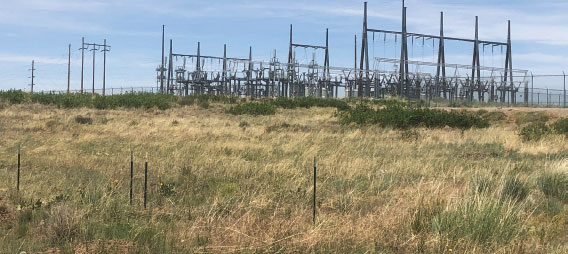
Tri-State’s Cahone substation will soon be surrounded by thousands of photovoltaic panels
as part of the Dolores Canyon Solar Project. Photo by Carolyn Dunmire.
There’s a new power behind the light switch.
Tri-State Generation and Transmission Association, the electric power provider to Empire Electric Association (EEA), is undergoing fundamental changes to its membership, regulatory oversight, and power generation portfolio.
EEA will be directly affected by these changes through its long-term wholesale electric service contract, which requires Empire to purchase 95 percent of its energy from Tri-State through 2050. Since payments to Tri-State are the largest part of EEA’s and its members’ monthly bills, electricity bills could go up or down, depending on decisions made by the EEA board of directors on whether to continue with Tri- State as its primary energy provider or to invest locally in self-supply or transmission upgrades to reach other providers.
These are decisions that the Empire board has not considered since it signed with Tri-State in 2007.
Marianne Mate, an EEA member and Dolores resident who has been attending EEA board meetings for the past year, said by email, “I have several concerns about the upcoming changes at Tri-State. Local coops like EEA will have an opportunity soon to revise their existing, restrictive 40-year contracts to allow for more local development and purchase of cheaper renewable resources with the opportunity to lower our bills. While EEA does a great job of making sure the lights come on when we flip that switch with great staff, reliability and service; the issues and decisions EEA faces now are very complex and may require a shift from being neutral to a much more proactive approach.”
A family affair
Like EEA, Tri-State is a member-owned cooperative. It generates and transmits electric power to distribution cooperatives in four states (Colorado, New Mexico, Wyoming, Nebraska).
As an association of member-owned utility cooperatives, the Tri- State family, as it often refers to itself, enjoyed an exemption from federal regulatory oversight that would normally be required of a generation and transmission company operating across state lines. Instead, Tri- State operated under a mix of self-regulation through its board of directors and regulation by various state utility commissions when disputes arose between members and Tri- State.
All that changed when the Tri-State board amended its by-laws in April 2019 and welcomed three members that were not utility cooperatives into the association. This new membership arrangement obliged Tri-State to have its wholesale energy rates regulated by the Federal Energy Regulatory Commission (FERC). The FERC is an independent federal agency set up to oversee interstate commerce in the energy sector such as electric power transmission and sales, and natural gas and oil pipelines.
The EEA board of directors fully supported Tri-State’s move to federal oversight. In an email to the Free Press, Bill Mollenkopf, Empire’s representative on the Tri- State board, explained what FERC regulation means for EEA members. “Becoming FERC regulated eliminates the numerous longstanding difficulties that have been created by Tri-State being regulated by multiple State Regulatory Commissions, each with their own set of varying agendas. FERC regulation of Tri-State will eliminate EEA members being at risk resulting from politically driven, and frequently conflicting, decisions.”
Josh Dellinger, EEA’s general manager, added one more point in favor of FERC regulatory oversight in an email. “The Colorado Public Utility Commission (PUC) denied other Tri-State co-ops the ability to intervene in the LPEA/United case [details below], even though the outcome will directly affect us. If the issue were at FERC, we could submit filings and make our voice heard. As it is at the Colorado PUC, we cannot.”
After some administrative maneuvers, FERC accepted Tri-State’s application for wholesale rate and contract oversight in May 2020 and made it effective as of September 2019, when the first non-utility member joined the association.
Exiting Tri-State
As Tri-State was looking for new family members, several utility members were planning their exit. Kit Carson Electric Cooperative (KCEC) serving Taos, New Mexico was the first.
Citing a desire to generate more local, renewable power than the 5 percent allowed under its contract with Tri-State, KCEC paid an exit fee of $37 million and left in 2016. The exit fee is set to cover the debt and investment incurred by Tri-State to provide its electric service and keep remaining members “whole”.
Shortly after KCEC’s exit, Delta Montrose Electric Association (DMEA) had a dispute with Tri-State over purchasing power from a qualified facility that would have exceeded its own contract cap.
Bill Patterson, the chair of the board, explained DMEA’s position in an April 2020 press release: “DMEA is expected to eventually bring its local generation above 20 percent. DMEA was capped at 5 percent local generation under its previous power supply agreement [with Tri-State]. These community projects will result in cost-effective renewable energy being built and used right here in our own service territory.”
In the end, Tri-State and DMEA could not come to an agreement on the contract cap or even how to terminate the contract and its associated exit fee. While DMEA conceded that it must cover the debt and investment incurred by the association to meets its contract requirements, Tri-State viewed the exit fee as the amount of money to keep the remaining members “whole” for the 40 years remaining in the DMEA’s service contract. Since the contract did not include a termination clause, the exit process and associated fees were up for negotiation.
Colorado PUC enters in
In February 2019, DMEA appealed to the state for relief in negotiating a reasonable exit fee with Tri-State, and the Colorado PUC stepped in to assert its regulatory oversight of Tri-State. After initial hearings before the Colorado PUC and tit-for-tat lawsuits in Adams County District Court, DMEA and Tri-State came to a settlement five months later. The exit fee paid by DMEA amounted to $88 million in cash and capital credits, about one-quarter the initial exit fee estimate proposed by Tri- State.
With a second utility-member exit on the horizon and wholesale energy prices reaching new lows, two more utility members, La Plata Electric Association (LPEA), serving Durango, and United Power (United), serving central Colorado outside of Denver, began exploring power purchase options of their own.
LPEA and United together comprise about one-quarter of Tri- State’s annual electric power requirement and United is Tri-State’s largest and fastest growing member. Their exit held potentially much larger revenue losses for Tri-State than KCEC or DMEA combined.
After months of unfruitful communications with Tri-State, LPEA and United filed a request with the Colorado PUC in November 2019 to exercise its regulatory authority once again over Tri-State and compel the association to provide them with a just exit charge.
In the filing, LPEA and United requested that they be treated in the same manner as KCEC and DMEA.
Tri-State’s CEO Duane Highley explained why that was not possible in a press release dated May 29: “United Power’s and LPEA’s claims of discrimination are unfounded. Their arguments are apples to oranges comparison, as previous withdrawal agreements were settled in the context of negotiations, based on a variety of factors, including shorter contracts, projections from different time periods, and the factors unique to the timing of the withdrawals.”
The Colorado PUC agreed to hear the case and assigned an administrative law judge to manage the proceedings.
After listening to hours of testimony on May 18-20, 2020, this reporter found that the case hinges on the difference between paying an exit fee based on a negotiated settlement or a fee based on Tri-State’s “make-whole” standard – a difference that could amount to hundreds of millions of dollars.
For example, LPEA explains the benefits of pursuing this lawsuit, despite its legal costs, on its website. “The only way to limit more [LPEA] rate increases are to explore options for cheaper energy, which makes up the majority of LPEA’s expenditures. Between 2000-2016, Tri-State raised its rates 12 times, doubling the price LPEA was paying for power over that period. What’s even more concerning is that Tri-State estimates its rates will increase an additional 50 percent by 2050, even as energy rates are trending downwards.” ( https://www.lpea.com/ lpea-vs-tri-state-fight-local-control)
‘Part of a conspiracy’
Using similar tactics as DMEA, United went a step further on May 4, and filed a lawsuit in Adams County District Court alleging that Tri-State “recruited three nonutility entities as part of a conspiracy to defraud United Power and try to hold it (and possibly other cooperative members) captive in expensive and restrictive power contracts. Court documents outline how the years-long scheme intentionally misled members and ultimately caused financial harm to United Power and the almost 95,000 meters it serves. Named along with Tri-State in the lawsuit are three non-utility entities – MIECO, Inc., Olson’s Greenhouses of Colorado, LLC, and Ellgen Ranch Company – whom Tri-State convinced to orchestrate the scheme designed to prevent the Colorado PUC from deciding a fair exit charge for United Power.” (https://www. unitedpower.com/lawsuit-alleges-tri-stategt- conspired-mislead-cooperatives)
In its defense against United’s allegations, Tri-State filed a statement and countersuit on June 19 that said, “Tri-State today answered United Power’s meritless complaint in district court and filed a counterclaim seeking relief from United Power’s breach of its contract with Tri-State and its members. United Power’s complaint in district court is a further attempt to shift more than $1 billion in costs to Tri-State’s other members and their customers. Today’s filing by Tri-State was a necessary step to clarify that United Power must honor its contract with its fellow members and avoid this shift in costs.” (https:// www.tristategt.org/tri-state-files-answer-united-power-complaint-makes-breach-contract- counterclaim-protect-other).
While LPEA and United were drafting filings for their case before the Colorado PUC, the Tri-State board of directors was putting the finishing touches on a contract termination process and filing it with FERC. The termination process was approved by Tri-State’s board at its April 2020 meeting and accepted by the FERC at the end of May.
According to Tri-State’s Highley, “FERC’s acceptance of Tri-State’s contract termination payment filing is a decidedly positive outcome and an important step forward for Tri-State’s members, each of which now has a voice and will be treated equally on wholesale contract and rate matters.”
Presumably, this process will eliminate, or hopefully reduce, future contract termination disputes and exit fee negotiations, if for instance, EEA chose to terminate or change its current contract with Tri-State
Punitive and costly?
At the time of publication, the Colorado PUC had not ruled on the LPEA/United case; however, the consequences of this case and its repercussions on other Tri-State members are becoming clearer.
Mollenkopf explained, “If the Colorado PUC’s decision is rendered fairly, then there should NO effect on EEA members. A truly fair Exit fee should create neither winners nor losers. If the decision that comes down from the Colorado PUC is unfairly favorable to those exiting, then our EEA members (as will all of the remaining member systems of Tri-State) will suffer the burden of paying for the obligations that the exiting systems will be escaping even though they were contractually bound to share in those expenses.”
But concerns remain regarding Tri-State’s process and its future effects on Empire. Marianne Mate emailed: “Tri-State’s board of directors has, in my opinion, created language that allows Tri-State to place such punitive and costly restrictions on co-ops that revising the contracts and potentially allowing EEA to lower members’ bills becomes too financially prohibitive for local co-ops.”
A responsible plan
Since 2018, when the Rocky Mountain Institute (RMI), an energy-industry think tank in Snowmass, Colo., published a report finding that Tri-State could save $600 million by replacing legacy coal-fired power with wind and solar generation, Tri-State has faced pressure to provide more power from renewable sources. In addition, Colorado and New Mexico passed climate-change legislation in 2019 mandating carbon emissions reductions of up to 70 percent from utility generation by 2030.
However, the most compelling rationale for replacing coal power with renewables was when Tri-State received surprisingly low bid prices for solar and wind power projects in response to its 2019 solicitation for renewable generation.
Tri-State responded to these legislative and market forces by developing a Responsible Energy Plan (https://tristate.coop/responsible-energy-plan).
Tri-State’s process for developing the plan included a collaboration with an advisory group facilitated by the Center for a New Energy Economy (CNEE). The group, hand-picked by CNEE and Tri- State, included “representatives from across the states Tri-State serves from academic, agricultural, cooperative, electric industry, environmental, rural, and state and local government groups,” according to the plan’s website.
The resulting plan calls for “the retirement of the 253 megawatt Escalante Station in New Mexico by the end of 2020 and all three units of the 1,285 MW Craig Station in Colorado by 2030. On the renewables side, Tri-State plans to bring more than 1,000 MW of new wind and solar online by 2024, with eight projects in the works across Colorado and New Mexico.”
One of these eight, the Dolores Canyon Solar Project, will be in EEA’s service territory on leased private land surrounding Tri-State’s Cahone substation in Dolores County. The 110 MW project is scheduled to begin generating solar power by 2024. In addition, Tri-State initiated its coal-plant retirements by closing the Nucla Generating Station in 2019.
The REP will also implement the board’s decision regarding partial requirements contracts and additional self-supply for Tri- State’s utility members. Specific details on the terms of a partial requirements contract have not been released, except for what is included in Tri-State’s press release of April 9, ”Under the new contract, utility members can self-supply up to 50 percent of their load requirements,…in addition to the current 5 percent self-supply provisions and new community solar provisions.”
EEA’s Totten Lake Solar Project (see below) is an example of a utility self-supply project. This relatively small project will keep EEA below its current full-requirements contract cap of 5 percent. But with the lid blown off the contract cap, new or expanded solar projects are now possible.
Positive reaction
The response to the Responsible Energy Plan has been generally positive. RMI, which initially challenged Tri-State to replace coal-fired generation with cheaper renewables, lauded Tri-State for “choosing the low carbon path.”
But one REP advisory group member, Howard Geller, executive director of the Southwest Energy Efficiency Project, finds the REP lacking. In an email, Geller said, “I urged Tri-State to ramp up its energy efficiency and demand response programs in partnership with its member co-ops, as part of the Responsible Energy Plan. For the most part, Tri-State declined to do this. This is a significant deficiency in the plan, in my view.”
The potential effects of the REP on EEA members were summarized by Mollenkopf as follows: “EEA members will continue to expect and, receive: 1) excellent continuing electric reliability; 2) stable rates (possibly even some rate decreases) for many years to come; 3) continued responsibility, including environmental, to the area that we all enjoy living in.”
But the Empire board still has work to do as more details on self-supply and contract options in the REP are revealed.
Mate highlighted some potential action items. “I think the EEA board must direct staff to evaluate the cost/benefit of investing in battery storage, local investment and development of renewable energy as well as the cost/benefit of renegotiating the long term contract with Tri-State.”
Whatever the future holds, EEA will have a decidedly different energy supplier with a new contracting and regulatory regime overseen by FERC, different members on the Tri-State board, and expanded energy supply options.
Totten Lake solar project hearing set for July 9
EEA is proposing to develop the Totten Lake Solar Project on land it owns near Montezuma County Road 29. Josh Dellinger, EEA’s general manager, said in an email, “The 2.2 MW project will produce enough energy to serve about 450 homes.”
The project is scheduled to be completed in fall 2020. The project will be owned and operated by OneEnergy Renewables and Empire will purchase the power from OneEnergy through a power purchase agreement. “OneEnergy is applying for a special use permit with Montezuma County Planning and Zoning to build a commercial solar project on land that is currently zoned agricultural/residential,” Dellinger said.
The Totten Lake Solar Project has raised some concern with neighbors related to viewshed and nesting bald eagles. Dellinger said OneEnergy “has been in very close communication with both U.S. Fish and Wildlife and Colorado Parks and Wildlife regarding the eagle nest and will abide by all their requirements.”
The public hearing before the Planning and Zoning Board is scheduled for Thursday, July 9, at 6 p.m. at 109 W. Main, Room 250, Cortez.
EEA election rescheduled
Empire Electric’s annual meeting and election, usually held
in mid-June, have been postponed until Oct. 8. This year, two
board seats are open – District 4 – Dolores (currently held by
Bill Mollenkopf) and District 7 — Cortez (currently held by
John Porter. More details on the annual meeting and election are
available at https://www.eea.coop/your-annual-meeting.

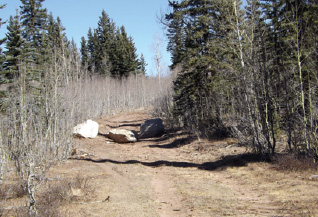
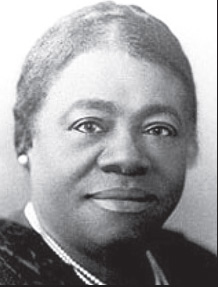
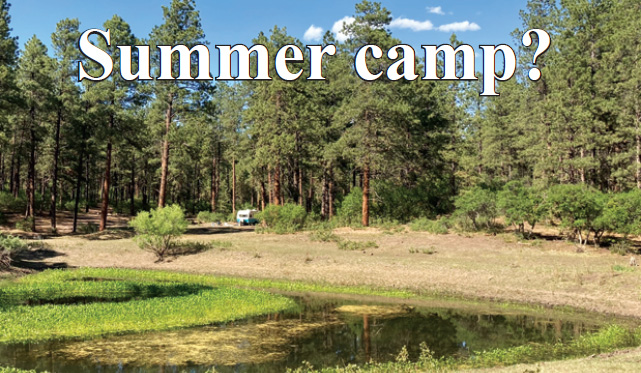
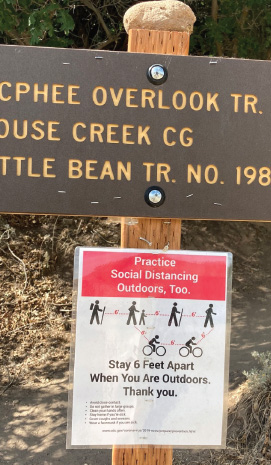 Rice agreed that he’s seeing more RVs in the Boggy Draw area, and said the Forest Service has tried to accommodate the increase in visitation. “We have increased camping all along the main Boggy Draw road within half a mile of the trailhead. We’ve added spur roads to try to centralize the impacts so they’re not all over the forest.” He said this helps keep people from making their own “two-tracks” out into the forest. “When we start to see small two-tracks going into sites, it does change the character of the forest.”
Rice agreed that he’s seeing more RVs in the Boggy Draw area, and said the Forest Service has tried to accommodate the increase in visitation. “We have increased camping all along the main Boggy Draw road within half a mile of the trailhead. We’ve added spur roads to try to centralize the impacts so they’re not all over the forest.” He said this helps keep people from making their own “two-tracks” out into the forest. “When we start to see small two-tracks going into sites, it does change the character of the forest.” Three just-released cozy mysteries by top notch Colorado authors offer a trio of exceptional reading escapes to those who like their diversions tinged with murder.
Three just-released cozy mysteries by top notch Colorado authors offer a trio of exceptional reading escapes to those who like their diversions tinged with murder.
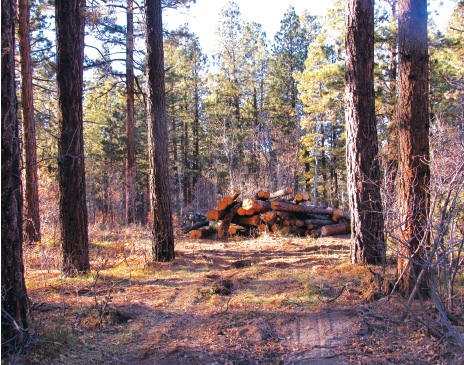
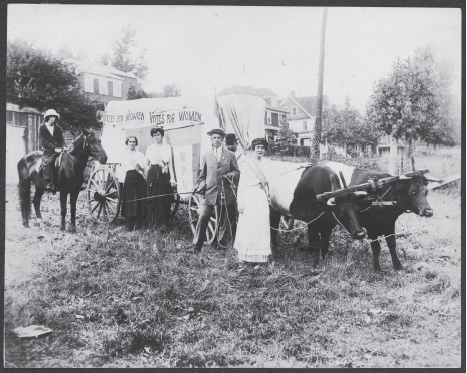 2020 is the centennial anniversary of the passage of the 19th Amendment, protecting women’s constitutional right to vote, and allowing women to exercise that legal right. Fact: The 19th Amendment never directly mentioned women. The text actually states, “The right of citizens of the United States or by any State on account of sex. Congress shall have the power to enforce this article by appropriate legislation.” This historic anniversary offers an opportunity to not only commemorate this milestone in democracy but to explore its relevance to issues of equal rights today.
2020 is the centennial anniversary of the passage of the 19th Amendment, protecting women’s constitutional right to vote, and allowing women to exercise that legal right. Fact: The 19th Amendment never directly mentioned women. The text actually states, “The right of citizens of the United States or by any State on account of sex. Congress shall have the power to enforce this article by appropriate legislation.” This historic anniversary offers an opportunity to not only commemorate this milestone in democracy but to explore its relevance to issues of equal rights today. Franz Kafka—the cop—is the “patron saint of lost causes.” He doesn’t have a good memory for faces (not handy when you’re an officer of the law). He was born in the month of “dreamers and idealists.” He can quote William Blake with ease. He grew up “semi-feral” in Wales with an overbearing twin sister. He has a thing for The Doors. Given his inclination to say or do the wrong thing, he’s often considering alternative careers, such as working as a budtender in a marijuana shop.
Franz Kafka—the cop—is the “patron saint of lost causes.” He doesn’t have a good memory for faces (not handy when you’re an officer of the law). He was born in the month of “dreamers and idealists.” He can quote William Blake with ease. He grew up “semi-feral” in Wales with an overbearing twin sister. He has a thing for The Doors. Given his inclination to say or do the wrong thing, he’s often considering alternative careers, such as working as a budtender in a marijuana shop.
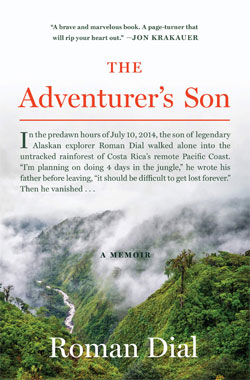 Memorials dedicated to young adults who died doing the sorts of adventure sports the Four Corners prides itself on — backcountry skiing, rock climbing, whitewater kayaking — are scattered across the region. Formal as well as informal, the memorials range from a sandstone bench along a river’s edge to a metal sculpture resembling a raptor’s aerie high on a mountain ridge to a new forest painstakingly planted by loving volunteers tree by tree.
Memorials dedicated to young adults who died doing the sorts of adventure sports the Four Corners prides itself on — backcountry skiing, rock climbing, whitewater kayaking — are scattered across the region. Formal as well as informal, the memorials range from a sandstone bench along a river’s edge to a metal sculpture resembling a raptor’s aerie high on a mountain ridge to a new forest painstakingly planted by loving volunteers tree by tree.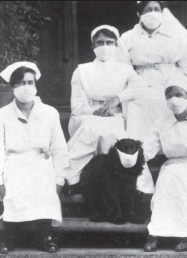 When looking at the Spanish Flu epidemic of 2018-19 I realized that it wasn’t until very late in the 20th century that attention was turned to this devastating pandemic or very much written about it. It seemed to fade from American memory and with it the valiant effort of American nurses during the pandemic. In the years following its devastation it seemed to escape the notice of historians. What was it about the flu that provoked this silent response? Is there something about mainstream American culture, with its optimism and pride, that simply refuses to reckon with the idea of mass death from an unstoppable illness? A close look at recent history suggests that maybe the 20th century silence about the flu epidemic of 1918-19 shows how uneasy many Americans have been with failure, death, and loss, and how strongly most of the nation seems to prefer stories that celebrate heroic achievement.
When looking at the Spanish Flu epidemic of 2018-19 I realized that it wasn’t until very late in the 20th century that attention was turned to this devastating pandemic or very much written about it. It seemed to fade from American memory and with it the valiant effort of American nurses during the pandemic. In the years following its devastation it seemed to escape the notice of historians. What was it about the flu that provoked this silent response? Is there something about mainstream American culture, with its optimism and pride, that simply refuses to reckon with the idea of mass death from an unstoppable illness? A close look at recent history suggests that maybe the 20th century silence about the flu epidemic of 1918-19 shows how uneasy many Americans have been with failure, death, and loss, and how strongly most of the nation seems to prefer stories that celebrate heroic achievement.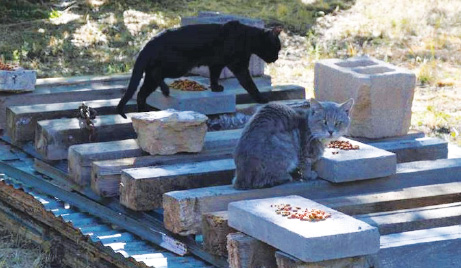

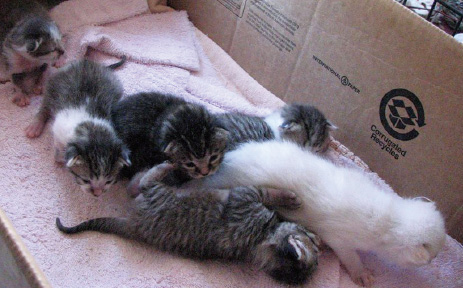
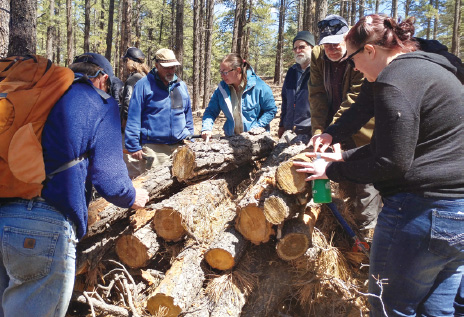
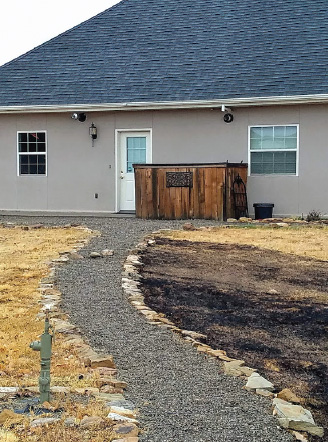
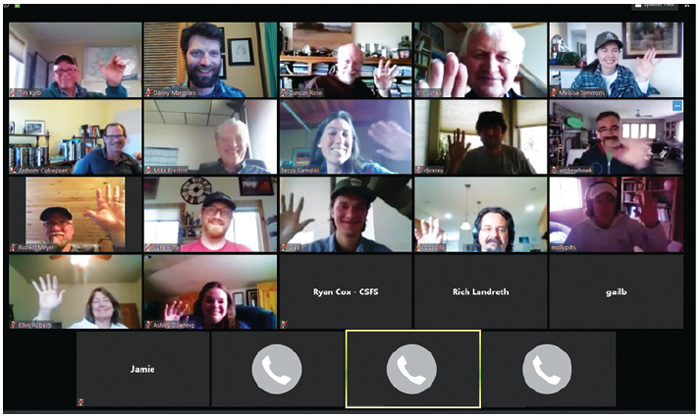
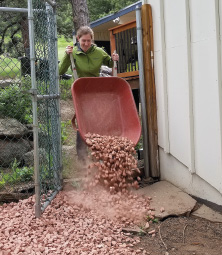
 When first we meet Gabriel Haynes, the narrator of Susan M. Gaines’ luminous sophomore novel, the year is 1999 and he is a recent college graduate with a cubicle-farm job, newly divorced parents, and an abiding passion for birding. That’s when Gabe’s mother Lili, a naturalized U.S. citizen and junior college professor, surprises her son by announcing her intention to leave her comfortable Bay Area home – “I can’t stand this big monster country anymore!” – and return to her native Uruguay after a 30-year absence in order to begin her life anew, growing organic vegetables on her late father’s abandoned estancia. Wouldn’t Gabe like to come along and spend a few weeks helping her get settled?
When first we meet Gabriel Haynes, the narrator of Susan M. Gaines’ luminous sophomore novel, the year is 1999 and he is a recent college graduate with a cubicle-farm job, newly divorced parents, and an abiding passion for birding. That’s when Gabe’s mother Lili, a naturalized U.S. citizen and junior college professor, surprises her son by announcing her intention to leave her comfortable Bay Area home – “I can’t stand this big monster country anymore!” – and return to her native Uruguay after a 30-year absence in order to begin her life anew, growing organic vegetables on her late father’s abandoned estancia. Wouldn’t Gabe like to come along and spend a few weeks helping her get settled?






